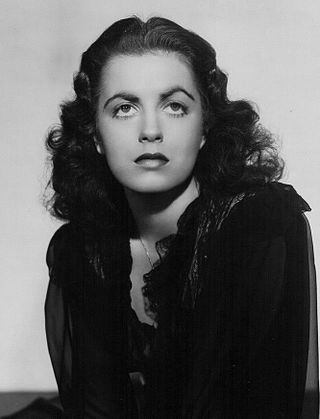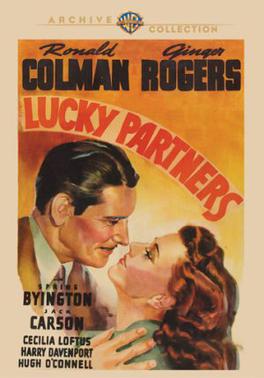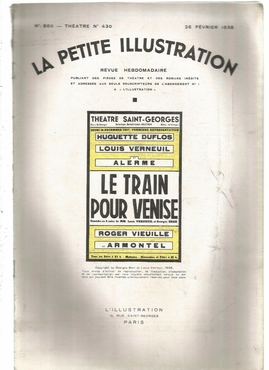
The Thing from Another World, sometimes referred to as just The Thing, is a 1951 American black-and-white science fiction-horror film, directed by Christian Nyby, produced by Edward Lasker for Howard Hawks' Winchester Pictures Corporation, and released by RKO Radio Pictures. The film stars Margaret Sheridan, Kenneth Tobey, Robert Cornthwaite, and Douglas Spencer. James Arness plays The Thing. The Thing from Another World is based on the 1938 novella "Who Goes There?" by John W. Campbell.

A Double Life is a 1947 American film noir which tells the story of an actor whose mind becomes affected by the character he portrays. It stars Ronald Colman and Signe Hasso. It is directed by George Cukor, with screenplay by Ruth Gordon and Garson Kanin. Ronald Colman won the Academy Award for Best Actor for his performance in this film.

Susan Hayward was an Academy Award-winning American film actress, best known for her film portrayals of women that were based on true stories.

John Saxon was an American actor who worked on more than 200 film and television projects during a span of 60 years. He was known for his work in Westerns and horror films, often playing police officers and detectives.

William Reginald Gardiner was an English actor on the stage, in films and on television.

Maria Alekseyevna Ouspenskaya was a Russian actress and acting teacher. She achieved success as a stage actress as a young woman in Russia, and as an older woman in Hollywood films.
Champagne for Caesar is a 1950 American comedy film about a quiz show contestant. It was directed by Richard Whorf and written by Fred Brady and Hans Jacoby. The movie stars Ronald Colman, Celeste Holm, Vincent Price, Barbara Britton and Art Linkletter. The film was produced by Harry M. Popkin for his Cardinal Pictures and released by United Artists.

Jean Brooks was an American film actress and singer who appeared in over thirty films. Though she never achieved major stardom in Hollywood, she had several prominent roles in the early 1940s as a contract player for RKO Radio Pictures.

John Elmer Carson, known as Jack Carson, was a Canadian-born American film actor. Carson often played the role of comedic friend in films of the 1940s and 1950s, including The Strawberry Blonde (1941) with James Cagney and Arsenic and Old Lace (1944) with Cary Grant. He appeared in such dramas as Mildred Pierce (1945), A Star is Born (1954), and Cat on a Hot Tin Roof (1958). He worked for RKO and MGM, but most of his notable work was for Warner Bros.

Faith Marie Domergue was an American film and television actress. Discovered at age 16 by media and aircraft mogul Howard Hughes, she was signed to a contract with Hughes's RKO Radio Pictures and cast as the lead in the studio's thriller Vendetta, which had a troubled four-year production before finally being released in 1950.

Back Street is a 1961 American Eastmancolor drama film directed by David Miller, and produced by Ross Hunter. The screenplay was written by William Ludwig and Eleanore Griffin based on the 1931 novel of the same name by Fannie Hurst. The music score is by Frank Skinner, who also scored the 1941 version. The film stars Susan Hayward, John Gavin, and Vera Miles.

Forever and a Day is a 1943 American drama film, a collaborative effort employing seven directors/producers and 22 writers, with an enormous cast of well-known stars.

Girl Crazy is a 1932 American pre-Code musical film adaptation of the 1930 stage play of the same name. The film was very unlike the stage play except for its score. It was tailored for the comic talents of Wheeler & Woolsey, a popular comedy team of the time. Three songs written by George and Ira Gershwin for the play were retained: "Bidin' My Time", "I Got Rhythm", and "But Not for Me". According to RKO records, the film lost $150,000. Lon Chaney Jr. appears in the film (uncredited) as a dancer in the chorus.
Design for Death is a 1947 American documentary film that won the Academy Award for Best Documentary Feature. It was based on a shorter U.S. Army training film, Our Job in Japan, that had been produced in 1945–1946 for the soldiers occupying Japan after World War II. Both films dealt with Japanese culture and the origins of the war.

Never a Dull Moment is a 1950 American comedy western film from RKO Pictures, starring Irene Dunne and Fred MacMurray. The film is based on the 1943 book Who Could Ask For Anything More? by Kay Swift. The filming took place between December 5, 1949, and February 1, 1950, in Thousand Oaks, California. It has no relation to the 1968 Disney film of the same name starring Dick Van Dyke and Edward G. Robinson.

The Late George Apley is a 1947 American comedy romance film about a stuffy, upper-class Bostonian who is forced to adjust to a changing world. It starred Ronald Colman in the title role and was based on John P. Marquand's novel of the same name and the subsequent play by Marquand and George S. Kaufman.

The Train for Venice is a 1938 French comedy film directed by André Berthomieu and starring Max Dearly, Huguette Duflos and Victor Boucher. It is based on the 1937 play of the same title written by Louis Verneuil and Georges Berr. Three years later an American adaptation of the play, My Life with Caroline, was produced starring Ronald Colman and Anna Lee.

Lucky Partners is a 1940 American romantic comedy film starring Ronald Colman and Ginger Rogers. Directed by Lewis Milestone for RKO Radio Pictures, it is based on the 1935 Sacha Guitry film Good Luck. The picture was the only film pairing of Colman and Rogers, and Rogers' eleventh and final film written by Allan Scott.
William Bellinger Hawks was an American film producer.

The Train for Venice is a 1937 comedy play by Georges Berr and Louis Verneuil. A farce, it premiered at the Théâtre Saint-Georges in Paris with a cast that included Verneuil, Huguette Duflos, André Alerme and Roland Armontel.

















